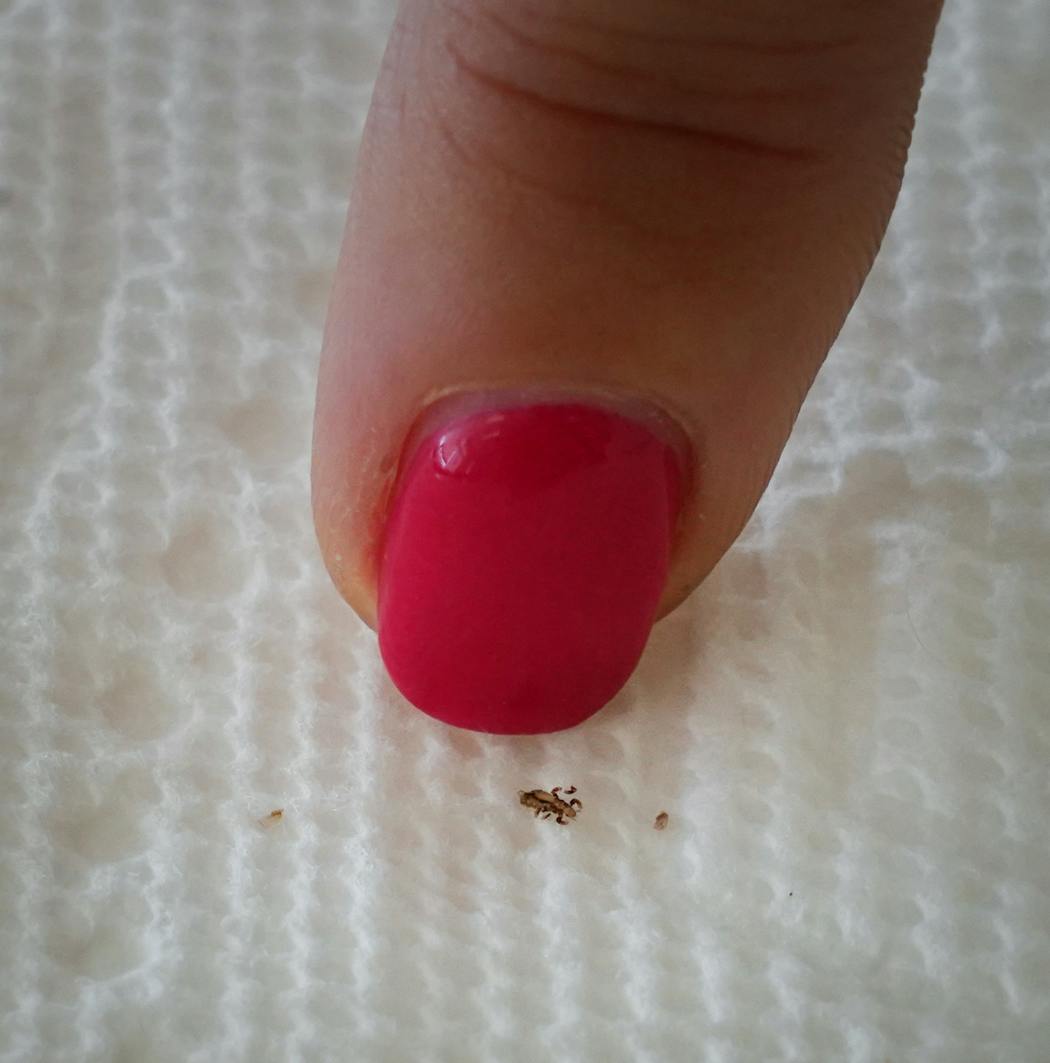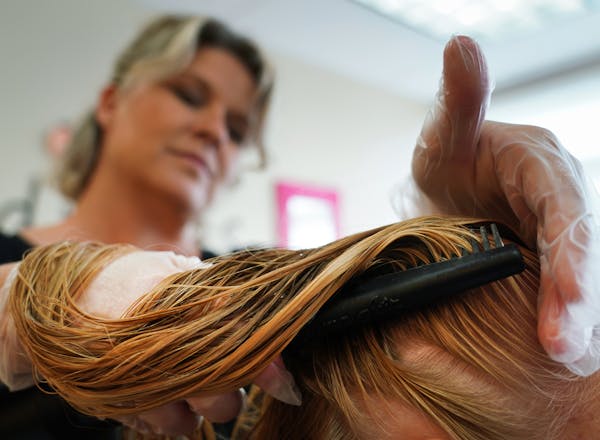Back in the '80s, I was part of a generation of schoolchildren who lined up in front of the nurse's office to have our little noggins checked for lice. The nurses used elongated toothpicks to part our hair and search for those blood-hungry bugs. If one of us would be sent home for the day, we'd know that kid had lice.
Routine head checks aren't so common in school settings anymore, and that's not the only thing that's changed. Schools and health providers are more conscious about the social stigma of lice, which is reassuring. But on the other hand, over-the-counter shampoos designed to kill the pests aren't as effective as they once were.
I've been on a learning spree about head lice in recent weeks, and it's not by coincidence. Here's the thing about these pervasive parasites: You never think about them unless you have to.
Well, I've had to.
Since my positive confirmation a few weeks ago, I've tried to remain a rational adult. But as anyone who's dealt with head lice will tell you, the lice on your head have a way of getting in your head.
I've washed and dried dozens of loads of laundry on the highest heat settings, vacuumed and re-vacuumed couch cushions and car seats, stripped and restripped bedsheets and pillowcases, and froze my hairbrushes for six nights — and then threw them in a pot of boiling water for good measure, only to melt some of them.
I've read all of the advisories assuring me that lice won't spread disease, and that they typically die off after a day or two after falling off the scalp. But it didn't stop my unraveling.
How could I not be grossed out?
"I would not be grossed out," said Dr. Elizabeth Placzek, a pediatrician at Children's Minnesota. "It's certainly alarming to find something you weren't expecting on your head. It's annoying and common, but it's not dangerous and it's easy to treat."
Now that I'm (hopefully) on the other side of this, I can say that this ordeal has challenged my assumptions about this ancient nuisance. Part of my journey from disgusted to enlightened involved sitting in a lice treatment clinic in Hopkins called Ladibugs, which resembles a salon for kids and their unfortunate parents. Snacks and cartoons kept the smallest clients entertained. Two professionals combed out nits, or lice eggs, from my hair. They even showed me the specks on a paper towel.
Rachel Knutson, who co-founded Ladibugs, got the idea for the business after her daughter, then in first grade, came home with lice about 14 years ago. Until then, she thought her family would be safe from infestation.
"I was always told as a child that it was the dirty kids that got lice," said Knutson, an R.N.
In fact, she says, it was the opposite. "Lice prefer clean hair," she said. "They can adhere eggs to the hair shaft much better."
Stigma still there
Kids with lice no longer are forced to get buzz cuts before returning to school, but the issue can still be embarrassing for children and their families. Knutson said when she used to do home visits for lice removal, parents would make sure that she would arrive in an unmarked car.
Cautious about shaming kids, many schools have stopped conducting routine head checks. The American Academy of Pediatrics (AAP) issued a statement in 2022 saying that screening programs in schools are costly, aren't proven to reduce head lice in school settings over time and can stigmatize children.
Taking a similar position, the National Association of School Nurses (NASN) says classroom screenings, which are "often inaccurate," should be eliminated, and that kids should not be forced to leave school for having live lice or nits.
The group also urged against broad notifications to parents when their child has been exposed, saying those alerts can breach student confidentiality. But I think this guidance misses the mark. As much as caregivers dread getting the email about confirmed cases in the classroom, it does prompt more vigilance at home. If my kid had lice, I would want his locker-mate's parents to know.
School exclusions
While it's still relatively common for kids with lice to be sent home or asked to stay away from school, many districts now err on the side of keeping kids in the classroom.
Both the AAP and the NASN urge schools to end their "no-nit" policies, which require children to stay out of the classroom until their head is free from the last nit. (Nits are not easy to transfer to other people, given they are cemented to the hair shaft, according to the Centers for Disease Control and Prevention. And if they are found more than a quarter-inch from the scalp, they may be empty shells or not viable.)
Rise of the 'super lice'
Popular brands like Nix or Rid have been on the market for decades, and they were highly effective when they first came out. But research suggests that some lice have built genetic resistance to pyrethrins or permethrin, the compounds found in many anti-lice shampoos and lotions. They only kill adult lice, not the nits, so you may need to reapply within about a week.
Placzek recommends those over-the-counter treatments as a first line of defense but says that parents can also manually remove lice and nits with special combs, which often have tightly spaced metal tines that can trap and pull out stubborn eggs.
Calling in the pros
Because this was my first encounter with head lice and I was shaken, I was willing to pay whatever to not deal with it myself. But not everyone has that luxury. Ladibugs charges $229 a person for the full treatment, which includes killing the bugs and eggs before combing out the dead debris. It uses a cooled-air treatment that flash-freezes lice and nits.
There are also professional nitpickers who comb out the nuisances and hand-pick every remaining critter and egg, strand by strand. A friend of mine paid a professional lice remover about $500 for a home visit, which included head checks for every family member, manually removing the lice from her and her son's hair, and a follow-up visit.
But experts say it's not necessary to hire a professional.
Knutson recommends applying regular conditioner to wet hair, and then removing the lice and nits with a special nit comb. This should be done over five days, she said. The LiceMeister comb, made by the National Pediculosis Association, sells for about $12 on Amazon. Ladibugs also sells a lice comb as part of its elimination kit, a total cost of $38.
"If you can be persistent, and you can comb, you can get rid of lice," she said. "It's just going to take time."
If lice set up residence on your scalp, stay calm and think of it as a rite of passage. The facts can help get you through the freakout.

Yuen: This Minnesota-based preacher left the church and found God in the woods
Yuen: The bizarre and relatable case of Minnesota state Sen. Nicole Mitchell

Yuen: Lynx No. 1 pick Pili finds 'blessing' fueling dreams of Samoan, Indigenous kids

Yuen: Why do people forgive? It's messy, complex and 'the best form of self-interest'





